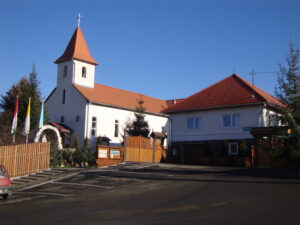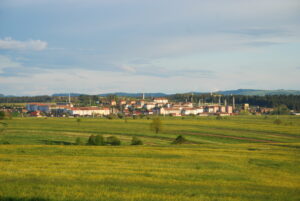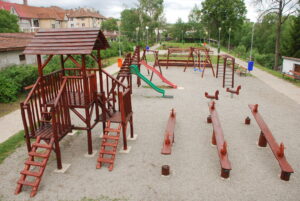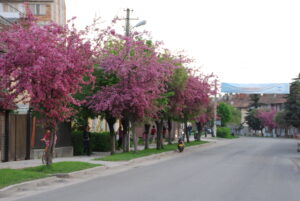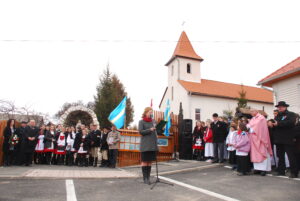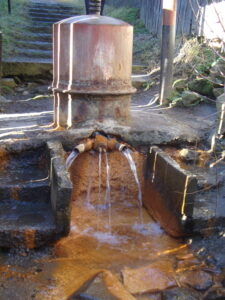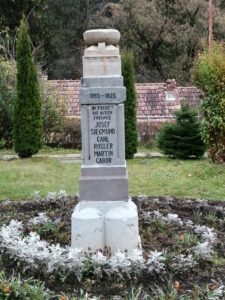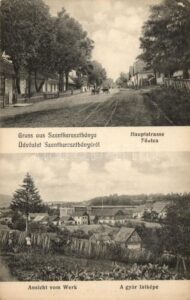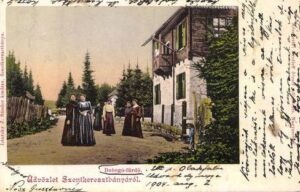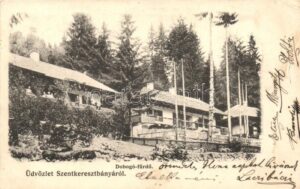Holy Cross Mine (Szentkeresztbánya) used to be one of the most important economic and industrial centers in Szeklerland. Its past can be traced back to the beginning of the 19th century, when Miklós Demeter from 1850 established a new ironworks in the vicinity of the spa called Lobogó, and in 1854 the workers’ quarter of 24 houses was already mentioned as New City. Due to a mining plot under production called Szentkereszt, the developing ironworks would later be called Szentkeresztbánya. The quality of the manufactured iron (blandness, fineness) in Vlăhița was unique in Europe, because the iron was being melt on charcoal. The iron factory was permanently closed in 2010 because of the fewer and fewer demand of iron products and other factors.
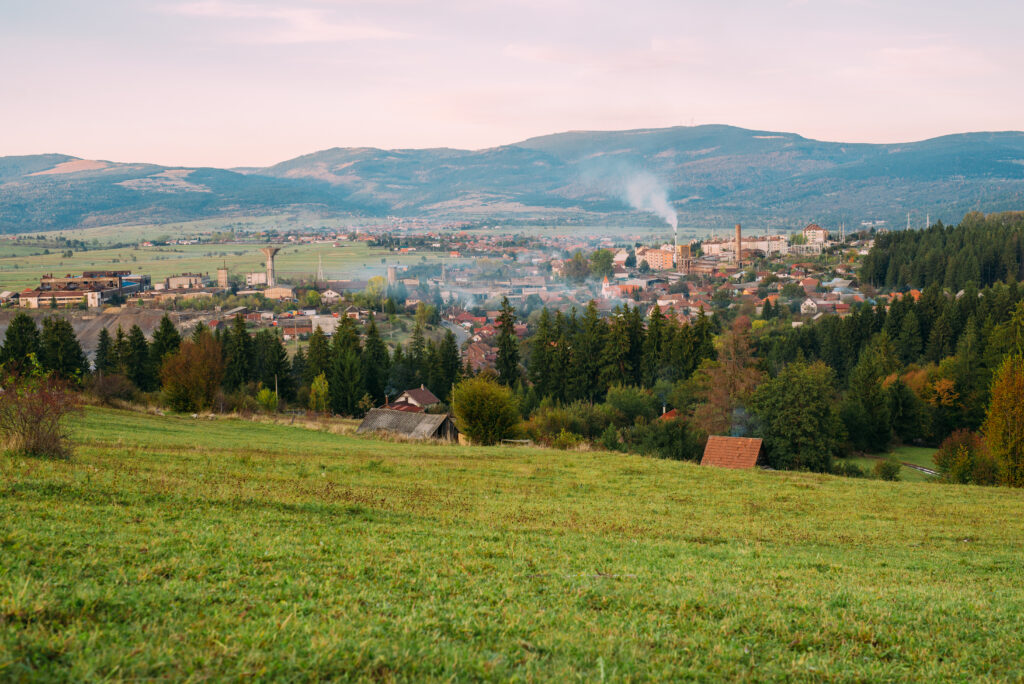
In this place in the second half of the 19th century there was a flourishing bath life with the spas called Dobogó (later Székelyfüred) and Lobogó (on the site of the plant). The former owner of the Dobogó Bath, Gábor Ugron, discards of his spa, which was developed and operated from 1893 to 1923 under the stewardship of the Saxon Lutheran Church. This is commemorated by the column erected in the courtyard of the Vlăhița Health Center, as well as the once rebuilt period villas belonging to and located around the institution. In May it is worth admiring the dendrological park in the garden of the hospital, where you can discover introduced acclimatizing plants: sycamores, tulips, magnolia bushes and native tree species representative of the region.




